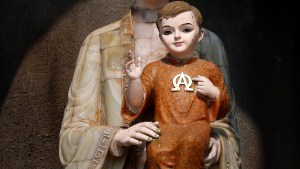Lenten Campaign 2025
This content is free of charge, as are all our articles.
Support us with a donation that is tax-deductible and enable us to continue to reach millions of readers.
Today we are used to relying on hospitals and clinics for our healthcare needs, but for much of the pre-modern era, it was monasteries and monk-run charitable organizations that assisted those in failing health.
Monasteries usually had a designated area for patients as well as “pharmacies” where they create herbal remedies using plants from their own orchards or gardens. Each monastery usually appointed a dedicated monk as the herbalist, tasked with creating medicines from herbs and other natural resources.

The herbalists of the Convent of Montesenario, a 13th-century complex on top of a hill 12 miles from Florence, were known for being particularly skilled healers. Over the course of two centuries, between the early 1600s and 1850s, they introduced some of the most important healthcare innovations in the area.
According to a manuscript, Brother Manetto Ferri (1579-1620) a former pharmacist turned monk, was especially good at making concoctions that could help his fellow monks as well as laypeople. Ferri used plants and roots from the monastery’s gardens as well as herbs gathered from the nearby fir-tree forest.
By mixing roots, leaves, and barks of different plants, Ferri created herbal remedies and liquors that were highly sought after by both monks and laypeople. Visitors to the monastery can still spot a small opening, located on the right of the main entrance, where monks, who used to live in cloistered settings, would lay out their herbal products for outsiders.

Later generations of Montesenario’s herbalists also left a mark on local healthcare. In 1865 herbalist Agostino Martini created the famous “Gem of Fir” liqueur, which is still crafted by Mount Senario monks today. Made with 17 local herbs including seeds of the white fir tree, the “Gem of Fir” was recognized as a product of botanical excellence at the London Exposition in 1902 and is still one of the best-selling products sold by the monastery.

In 1870 herbalist Stanislao Borghini patented the “Amaro Borghini,” a sugar-free digestif used to treat stomach ailments. Then, in 1889 herbalist Pietro Berni created the “China Elisir,” an herbal tonic used to treat malaria.
Finally, one of the greatest innovations of the ingenious monks of Montesenario was the creation of a large ice room, built in 1846, well before electric fridges and freezers could be used to keep produce and medicines at a cool temperature. The “ice room” was also used to make ice cubes and flavored frozen pops that were taken down to Florence and sold to laymen and women during the infamously torrid Tuscan summers.
Today, the monks of the Monastery of Montesenario still craft home-made herbal remedies which can be bought at the local monk-run pharmacy. Opening hours: 7 a.m.-9 p.m. during weekdays and 7:30 a.m.-7:30 p.m. on Sunday and holidays. Address: Via Di Montesenario 3474/A 50036 Bivigliano – Vaglia (Firenze). To get there from Florence: take the SR302 towards Vaglia, then take SS65 and SP103 up to the hilltop monastery.




